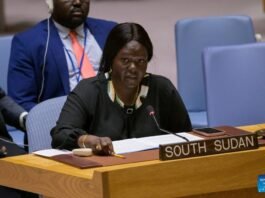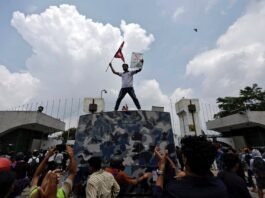The Division of Ideologies in Today’s World
The current global political landscape is increasingly characterized by a distinct division of ideologies. This division manifests in a prevailing dichotomy where a significant majority of individuals strive for peaceful coexistence. In stark contrast, a minority prioritizes the promotion of self-serving ideologies that often lead to conflict and instability. Furthermore, a smaller group advocates for genuine compassion and understanding, emphasizing the need for empathy in addressing global challenges.
The rise in population density plays a pivotal role in exacerbating these ideological divides. As urban areas become congested, competition for resources intensifies, leading to increased tensions. These tensions often result in the proliferation of self-serving agendas among certain groups, as they seek to protect their interests at the expense of others. Additionally, the rapid advancement of communication technologies has become a double-edged sword. While these technologies foster the exchange of ideas and promote awareness, they also facilitate the spread of divisive rhetoric and misinformation. This phenomenon can lead to heightened polarization within societies, where individuals become entrenched in their ideological positions.
Donald Trump’s Domestic and International Maneuvers
Donald Trump’s tenure as President of the United States was marked by a series of significant domestic and international maneuvers that drew both support and criticism. One notable event was his state visit to the United Kingdom, which was largely ceremonial in nature. The visit involved various engagements with key figures, including meetings with the British Prime Minister and royalty. Trump’s approach during these interactions was characterized by strategic diplomacy, albeit often influenced by his unconventional style.
Particularly striking was Trump’s address at the UN General Assembly, which generated considerable controversy. The speech was criticized for containing inaccuracies and extended well beyond the allocated time, leading to debates about its appropriateness and effectiveness. Critics argued that such a performance not only undermined the traditional decorum of international diplomacy but also highlighted a broader trend of misinformation that became prevalent during his administration. The implications of such rhetoric extended beyond international relations, igniting heated discussions about Trump’s approach to factual discourse.
Domestically, Trump’s inclination to deploy federal troops in major cities stirred concern among legal scholars and civil rights advocates. This move, often viewed as a response to protests against racial injustice, raised vital questions regarding executive authority and the balance of power within the government. Public reaction was mixed, with some supporting the administration’s efforts to maintain order, while others saw it as an overreach of presidential powers that threatened civil liberties.
Additionally, Trump’s military strategy, which included an emphasis on strengthening the U.S. military presence abroad, had profound implications for domestic stability. Critics contended that prioritizing military engagements resulted in overlooking pressing issues at home, fostering divisions among the populace and raising questions about the administration’s long-term impact on national unity.
The Fragile Peace Agreement Between Israel and Hamas
The recent peace agreement reached between Israel and Hamas highlights the ongoing complexities within the Middle Eastern political landscape. This fragile accord comes on the heels of significant escalations, including the controversial Israeli bombing of a hotel in Qatar, which has been cited as a catalyst for renewed hostilities and a rallying point for Hamas’s military operations. The atmosphere leading to this agreement was fraught with tension, thereby underscoring the continuing volatility in the region.
This peace agreement contains several key components that aim to address immediate concerns while attempting to pave the way for longer-term stability. Notable among these is the provision for a hostage exchange, a process that has been contentious and fraught with challenges. Hostage exchanges often require complicated negotiations and trust-building measures that are not easily established in the current environment. Furthermore, the agreement stipulates conditions regarding the disarmament of Hamas, which remains a contentious issue, as any unilateral disarmament may compromise Hamas’s security and operational capabilities.
The precarious nature of this peace agreement raises critical questions regarding the likelihood of sustained tranquility between the two parties. The potential for renewed hostilities looms large, particularly if the terms of the agreement are seen as failing to meet the expectations of either side. King Abdullah of Jordan, a significant regional player, continues to advocate for a two-state solution as a vital pathway toward lasting peace. He emphasizes that without a comprehensive resolution, including recognition of both parties’ rights and grievances, the cycle of violence is likely to resume. The fragility of this peace agreement and the underlying tensions illustrate the necessity for continued dialogue and diplomatic efforts in pursuit of a stable future for the region.
Future Prospects: Hopes and Concerns for Peace in the Region
The situation in the Israel-Hamas conflict continues to evoke a complex and nuanced response from both regional and global stakeholders. Recent negotiations aimed at establishing a lasting peace agreement have elicited a mix of hope and skepticism. Foreign correspondents report a general unease regarding the feasibility of these talks, especially given the entrenched positions of both sides and lingering grievances that have been exacerbated by decades of hostilities. The humanitarian issues tied to hostages further complicate the peace process, as their status becomes a bargaining chip in negotiations, raising ethical concerns about the potential prioritization of political outcomes over human lives.
Moreover, the political landscape surrounding these discussions is heavily influenced by the actions of key figures such as Donald Trump. The impact of U.S. foreign policy under Trump’s administration is significant, as the former president holds considerable sway in shaping public opinion and political narratives. The shifting focus of U.S. foreign policy, particularly towards the situation in Ukraine, raises questions about whether the Israel-Hamas peace plan will receive the necessary attention and resources it requires. Critics suggest that increased distraction from the Middle East could hinder progress and dilute the urgency needed to address longstanding conflicts.
Despite these challenges, there remain avenues for optimism. The involvement of international mediators and regional allies has the potential to create momentum towards a successful resolution. Dialogues fostered by diverse platforms, including diplomacy and grassroots initiatives, underscore a collective hunger for peace. Addressing the root causes of the conflict will be pivotal in creating sustainable solutions. Overall, while optimism exists, the confluence of skepticism, shifting political dynamics, and humanitarian concerns suggest that the path to peace in the region will require persistent effort and dedication from all involved parties.




